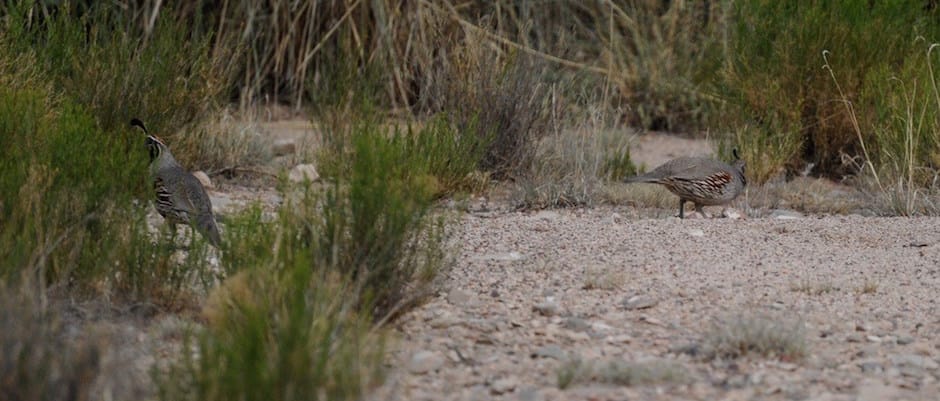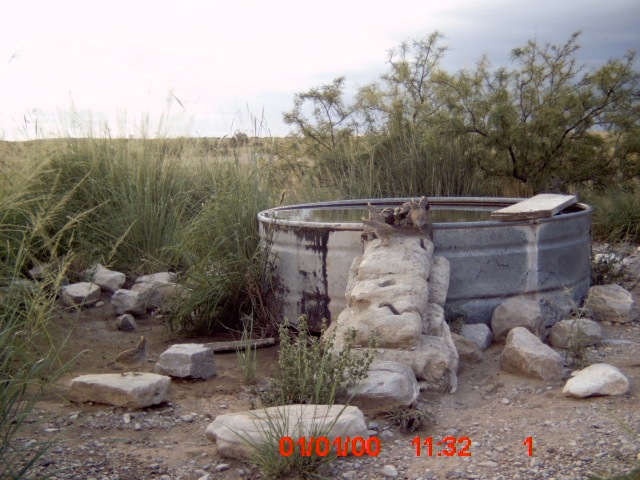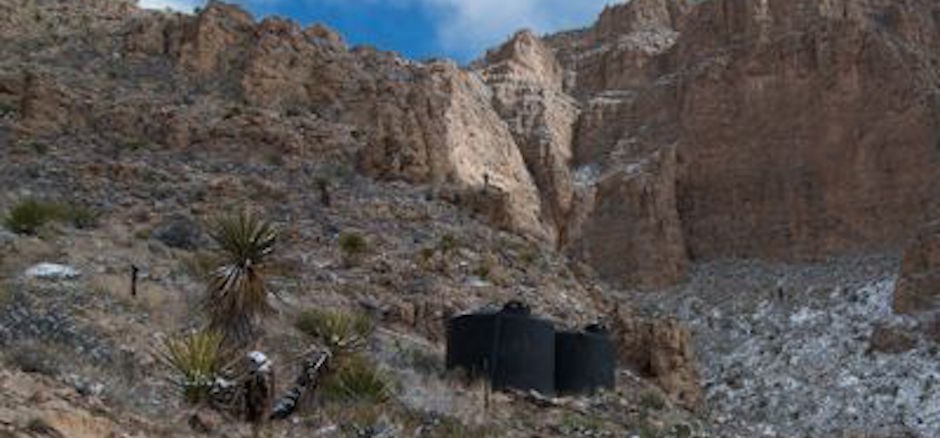Desert Quail and Water
Many quail experts say desert quail do not need water. Maybe so, but here is the ‘rest of the story’

in the desert, if you are looking for quail, look near water.
Furthermore, not all quail experts agree: Dr. Fred Guthery told QuailMasters 2009 that on reflection, after all the quail work he has done, water additions are the practice he would most readily repeat.
Here are some blues on a cattle drinker modified so it can be used by small animals and quail.

Texas Sporting Journal: Drinkers Welcome
Story by: JOHN R. MEYER
If you are the type who drives down the interstate west of San Antonio and thinks, “This place looks desolate.” Then you’ve probably never gotten out of your car and looked around. Certainly, it is a rugged environment, but a closer look reveals all but one ingredient for abundant life—water.
At all levels, water is a basic and irreplaceable component for survival. A map of an arid region will show springs prominently marked. If not accompanied by nearby settlement, then they are almost always surrounded by an intact ranch. Entire towns owe their very existence to the proximity of a dependable water source.
Adding water to a location where little to none previously existed can have the same dramatic effect on wildlife. An ability to extract it from food sources, as well as anatomical and physiological methods of making the most of what is available, enables life to exist in areas of Texas with less than 10 inches of rain a year. Adding a permanent water source though, concentrates wildlife in dramatic fashion.

Water access constructed of cement with tanks in the background–water is collected here by damming up the drainage immediately behind the tanks
ABOVE IS A TEXAS SPORTING JOURNAL ARTICLE PRAISING ARTIFICIAL WATER. THE PICTURED WATERER IS PART OF A ‘GUZZLER’ ARRAY PAID FOR BY THE TEXAS BIGHORN SOCIETY (TBS) AND DESIGNED BY TP&WD. IT IS LOCATED IN VICTORIO CANYON AT THE SIERRA DIABLO WMA. THE WATERER CANNOT BE USED BY QUAIL AND IS A HAZARD TO QUAIL WHICH COULD DROWN TRYING TO DRINK FROM IT. ROTTING DROWNED BIRDS IN THE WATER BECOME A HAZARD FOR WHATEVER USES THE DRINKER. ALL-TOO-OFTEN, WILDLIFE IS MANAGED FOR ONE SPECIES – IN THIS CASE SHEEP – RATHER THAN FOR AN ENTIRE ANIMAL COMMUNITY.
